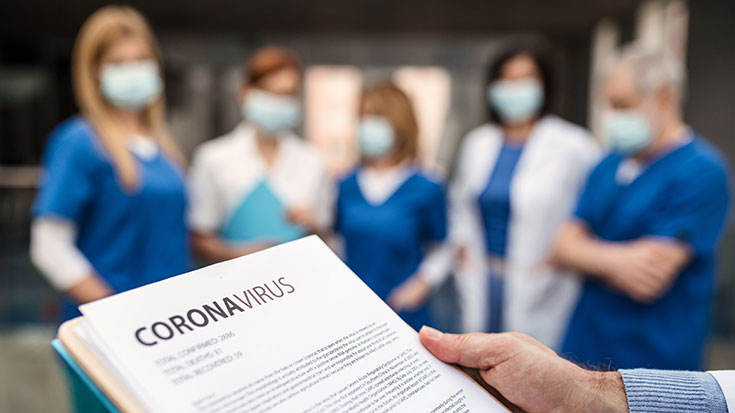
Not long after Rachel Rodriguez, RRT, graduated from her RT program at Middle Georgia State University in 2018, she decided it would be interesting to spend some time as a travel therapist. While she enjoyed the hospital she worked at in Atlanta, opportunities to intubate or place A-lines were few and far between and she wanted to see what else was out there.
Her first assignment was in a facility in Hickory, NC, and she loved it so much she extended for an additional six months. Then the pandemic hit and the hospital was forced to cancel her contract due to loss of revenue from the cancelation of elective surgeries.
But that didn’t mean her services were no longer needed. “The very next day, I had a ticket to NYC,” said Rodriguez.
She hit the ground running
Like everyone else in the world, Rodriguez was blindsided by COVID-19, but she knew she had the skill set necessary to roll up her sleeves and dive into the fray. While she worried about what her parents would think, who would take care of her pets, and how she would fare living on her own in the Big Apple, she stayed focused on the mission at hand.
“I put all of that to the back of my mind, packed up my car, and made the 12 hour drive in a straight shot, arriving there around 1 a.m. and ready to start work the next day at Mt. Sinai in Brooklyn,” she said.
Although initially she worried that she might run into the typical New York attitude we’re all familiar with from TV and the movies — brash, hard, and not open to outsiders — she says she found just the opposite. “These people were appreciative, kind, so funny, and always helpful,” she said. “We handled every code or difficult situation as a team and there was always someone willing to go the extra mile with you.”
Her services were sorely needed, as very few RTs were left in the hospital when she arrived. “Many of them got COVID early on and were out for five weeks,” explained Rodriguez. The remaining staff were exhausted and alarm fatigue was a big issue. But over her time in the city — she was there April-June — they went from having three refrigerated body trucks outside the facility to only one. “That felt like a victory,” she said.
Overwhelming tragedy
After things settled down in New York, Rodriguez was sent to South Texas to work in a hospital in Hidalgo Country, one of the poorest counties in the state. While New York was bad, what she found there was even worse.
With the ventilators running at 100%, a full tank lasted only about 45 minutes. The hospital tried to fix the problem, but they were never able to find a good solution and the staff ended up feeling defeated each time another thing they tried didn’t work.
The whole experience was hard on staff, Rodriguez included. “It took a very large toll on me psychologically — much more than New York did,” she said. “I only lasted there for two weeks.”
Smoother sailing
Now Rodriguez is at a facility in Miami, where the largest hospital in the area has been running 170-190 ventilators at a time. She says the department she’s working in is full of warm and friendly people and is much more organized than the one she was in in South Texas. So far things are running smoothly.
“I’m not sure how long I will be here, but most likely until they don’t need me anymore,” she said. “I would love to stay until this state is well contained.”
She says being able unwind on her balcony overlooking the water after a hard day hasn’t hurt either. “I might have needed this salty air more than I knew,” she said.
Ready for anything
Rodriguez says working in the hot zones of the pandemic has given her the chance to meet new people and make new friends, and it’s also taught her how to be prepared and flexible.
“It’s important to work with the interdisciplinary team to have a plan for these patients,” she said. “What can they tolerate? Are they comfortable? If they’re not tolerating what we’re trying, what can we do next?”
Being able to pick up the phone and call her colleagues in medicine and nursing to talk about what would be the best next step for the patient is priceless. “I make sure I know my nurses and doctors well and we have great relationships, so that we’re comfortable calling each other and saying, ‘Hey! That blood pressure looks good, let’s see if we can give a bit more sedation and prone’ or ‘Actually, the pressure isn’t looking too hot — I’m not comfortable trying them on APRV,’” she said.
It’s all about adapting to the situation at hand and then doing your best for the patient, says Rodriguez. “I feel blessed to have this skill set during a respiratory pandemic and I will continue to heal and advocate for as long as I am able,” she said. “There are almost four million nurses in the U.S., and just over 100,000 of us — we are so needed now and always.”
Email newsroom@aarc.org with questions or comments, we’d love to hear from you.

















